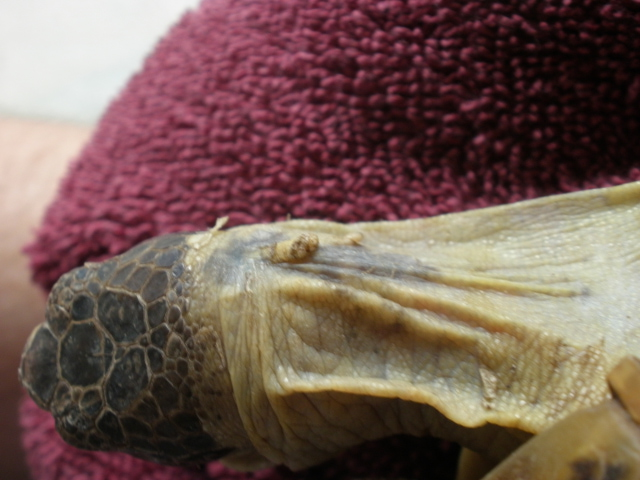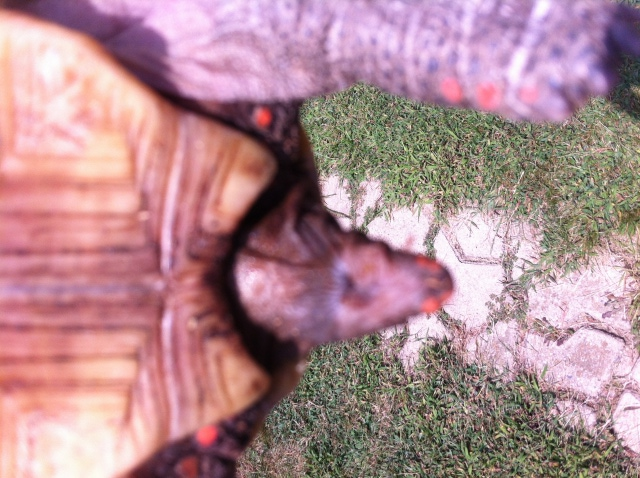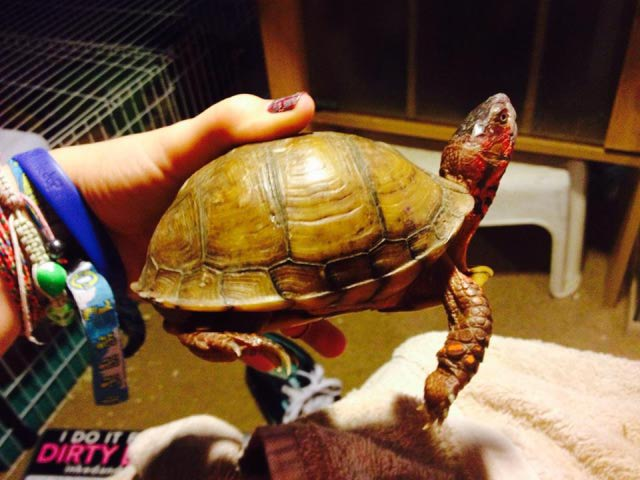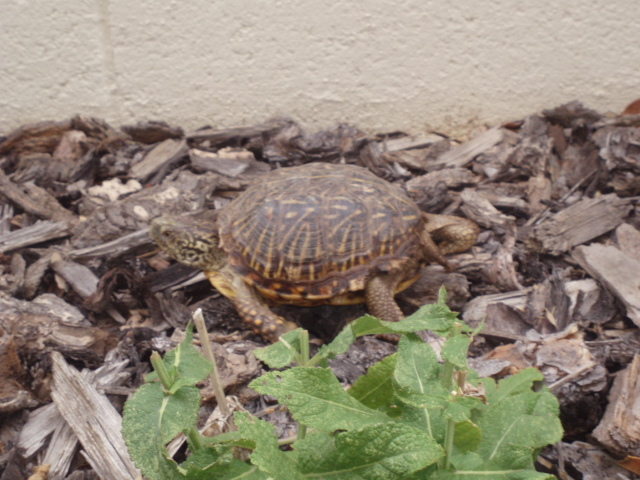Question-------------------------
Followup To
Question -
Hi I have always wanted a turtle or tortoises for some reason, anyways now that I can afford one I was wondering which would be better for me, A box turtle, a leopard tortoise or a yellow footed tortoise? I have lots time & space for one but wanted to know which would make a more intersting pet, as I would like to have it run around out of its cage once daily or at lest twice weekly, I dont mind if its not a so called "beginer" one as I dont mind a little extra work in caring for it, I would perfer one that isnt aggresive and that may even take some food from my hand, I would perfer one that can be kept indoors but one that can be kept in and out doors would work also. THank you for any advice you can give.
Answer -
I am going to assume you'll do your care homework well, starting with sites like www.tortoisetrust.org or www.tortoise.org and going from there.
Part of the answer will be what kind of climate can you more easily provide- warm and humid, or warm and dry? If humid (American Southeast), go with a tropical species like the Yellowfoot.
If drier (American Southwest) go with the Leopard.
Some other things to consider-
- Adult size. Leopards are BIG tortoises and demand a very large space all the time, even in winter. Yellows are medium sized, and boxies are the smallest.
- Personality. This is obviously a personal choise, but I would rank your three in this order, highest personality to lowest- Yellowfoot, Leopard, boxie.
- Many species of boxie are hard even for experts to do well with- Eastern and Three-toed are the easier, Ornates are tough.
- Outdoors. Most species of tortoise do best if kept outside. It is not quite as important with boxies (smaller, easier to provide good caging for), but especially Leopards WANT to be outside, in nice, big pens. Choose an animal that will do well where you are for the best match.
- 'Beginner' species are generally cheaper and easier to care for because they tolerate a wider range of habitats. The more difficult species do not just require more time, they also take more money (to provide the right heat, humidity, food, lighting, etc.); more expertise on many fronts- nutrition, behavior, medicine, etc.; more complicated feeding or other care, etc.
DO NOT buy a harder to care for animal for your first pick! It is just way to easy to kill the poor thing with your lack of experience.
I don't know where your list came from, but here is mine:
1. Redfoot tortoise. My #1 pick for easy care, personality, looks, intelligence, size, cost, etc. These are generally a bit smaller and hardier than Yellowfoots, and often considered a bit smarter/more personable.
2. Greek/Spur-Thighed or Hermann's tortoises- the basic Mediterranian tortoises. As a group, these are some of the most popular pets in the world after cats and dogs. Smaller, more tolerant of a wider range of habitats, usually good eaters and breeders, overall good choises.
3. Russian or Horsefield's tortoise- very hardy and easy care, but rather dull in appearance and personality. Often the cheapest true tortoise.
4. Eastern or Three-toed Box turtles. These guys can be beautiful, lively, fun to watch, and have some great behaviors. Not quite as good loose in a house. These turtles can surprise you- they climb well, are faster and more athletic than you'd guess, and are pretty dang smart.
5. Leopard and African Spur-Thighed tortoises. Big, lumbering creatures. Wonderful in many ways, but take a real dedication. They move things around like living bulldozers, dig with ease, eat everything and always, and really NEED a good outdoor pen most of the year.
A tortoise is an 50 year investment- if you care for it right! I'd suggest artarting small and cheap- boxie, Greek, or Russian to get going with. You can always increase your collection later!
Hello again I was wondering if you could list the supplys needed for the leopard tortoise?
AnswerI could, but I don't know enough about you or your situation, even the part of the country you are in, so I cannot give you an EFFECTIVE list.
Here are some websites (pulled from a quick Google search) to get you started.
http://tortoise.org/archives/pardalis.html
http://www.anapsid.org/dietcons.html
http://www.tlady.clara.net/TortGuide/Diet.htm
http://www.tortoisetrust.org/care/cpardalis.html
http://www.chelonia.org/Articles/pardaliscare.htm
http://exoticpets.about.com/cs/reptilesturtles/p/leopardtortoise.htm
http://www.geocities.com/carolinatortoises/leopardcare.html
An article on the African Spurred Tortoise, a similar species-
http://www.anapsid.org/sulcata.html
As a reminder, I again suggest that you not start with a big, expensive animal as your first tortoise. You are almost certainly going to have some things to learn, and your first animal is sort of a guinea pig. Using an expensive and beautiful animal like a Leopard tortoise as a guinea pig is a rather sad thing to do.
I know you mean well, and want to do the right thing, but it sounds like you are very new at this (if I am wrong, I apologize) and I'd really, really hate to see anything bad happen to you or your tortoise.
I should point out that the Leopard is one of the tortoises most commonly donated to zoos when they get too big and/or the owner no longer can or wants to keep taking care of it. Often, the poor tortoise is in poor health as well, usually because of bad housing or diet.

 Russian Tortoise neck discoloration
Question
Neck 1 Neck 2
I have a Russian to
Russian Tortoise neck discoloration
Question
Neck 1 Neck 2
I have a Russian to
 Redfoot tail
Question
Tail1 Tail2
A few days ago I went
Redfoot tail
Question
Tail1 Tail2
A few days ago I went
 I am pretty sure the box turtle has URI
Question
What a Beauty!
Hi Jamie,
My kids found
I am pretty sure the box turtle has URI
Question
What a Beauty!
Hi Jamie,
My kids found
 Box turtle!!
QuestionBox turtle
Box turtle
QUESTION: H
Box turtle!!
QuestionBox turtle
Box turtle
QUESTION: H
 female ornate
Question
George (we thought she
Jeannie- We found a fem
female ornate
Question
George (we thought she
Jeannie- We found a fem